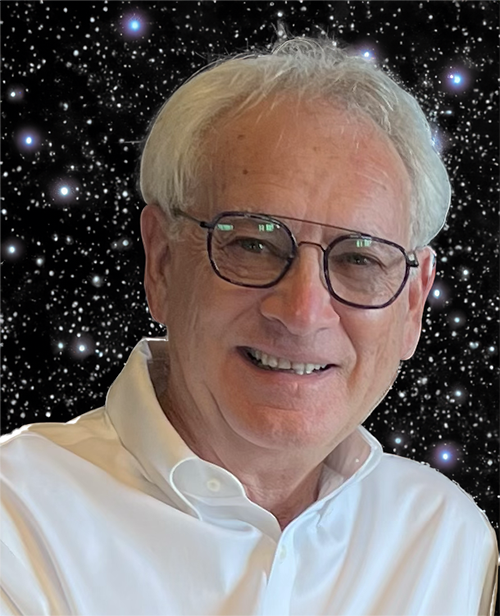[Editor’s Note: EDRM is proud to publish Ralph Losey’s advocacy and analysis. The opinions and positions are Ralph Losey’s copyrighted work.]
This Chronicle shows how Hackers have their origin in WWII techs and engineers like my father. There were at least five Villages of DefCon Dad would have liked: Soldering Skills, Crypto-Privacy, Ham Radio, Recon, and Misinformation Villages. I will explain why these particular villages would have appealed to him, a man who served in the Pacific as a Naval Communications Officer in WWII and, again, in the Korean War. For background I must also go into the surrender of Japan and the Occupation.
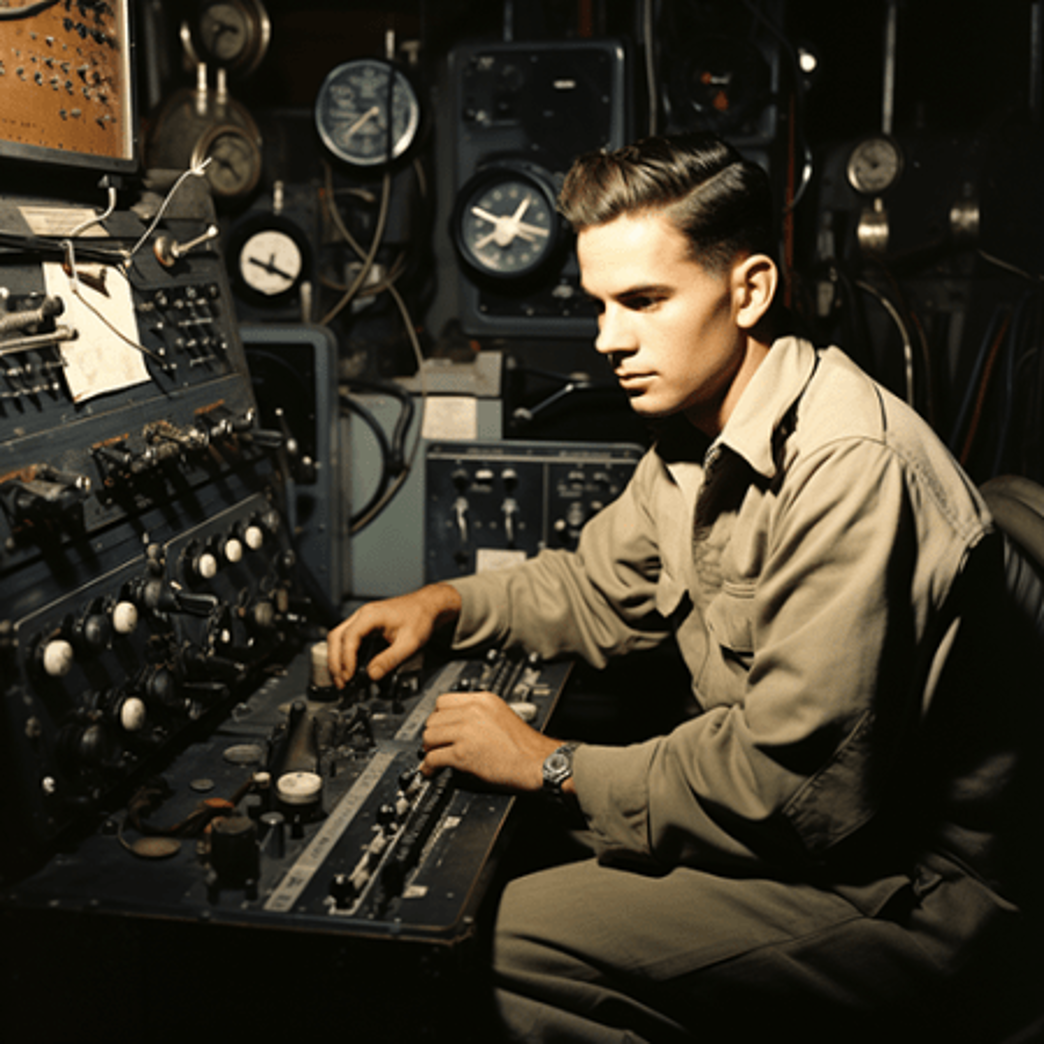
In connection with the Misinformation Village, I will also inform regarding the questionable conviction for treason of a young American woman accused of being Tokyo Rose. That was the name given to all of the Japanese American women who hosted the “Zero Hour” news and music show broadcast to GIs all over the South Pacific. The music was real, the news was fake.

Hacker techs, like my Dad, were born out of necessity to survive wars and propaganda. The skills they learned in WWII live on today in DefCon 31. Hacking then, and now, involves self-reliance, hands-on tech work, but also, as the DefCon 31 Red Team Village put it, critical thinking, collaboration, and strategy. DefCon Chronicles: The Thirty-Two Villages of DefCon. These are all things that many young men and women in WWII had to learn to make it through the War.
This is the sixth Chronicle in the DefCon Chronicles series. It began with Where Tech Elites, Aliens and Dogs Collide – Series Opener. The second chronicle is Hackers Response to President Biden’s Unprecedented Request to Come to DefCon to Hack the World for Fun and Profit. The third is my Village of special interest, described in Sven Cattell’s AI Village, ‘Hack the Future’ Pentest and His Unique Vision of Deep Learning and Cybersecurity. The fourth was The Hacker Olympics – ‘Capture The Flag’ Games with 1,828 Competing Teams. The fifth Chronicle provided a quick overview of all thirty-two of the Villages, with a close-up of the Red Team Village, DefCon Chronicles: The Thirty-Two Villages of DefCon.
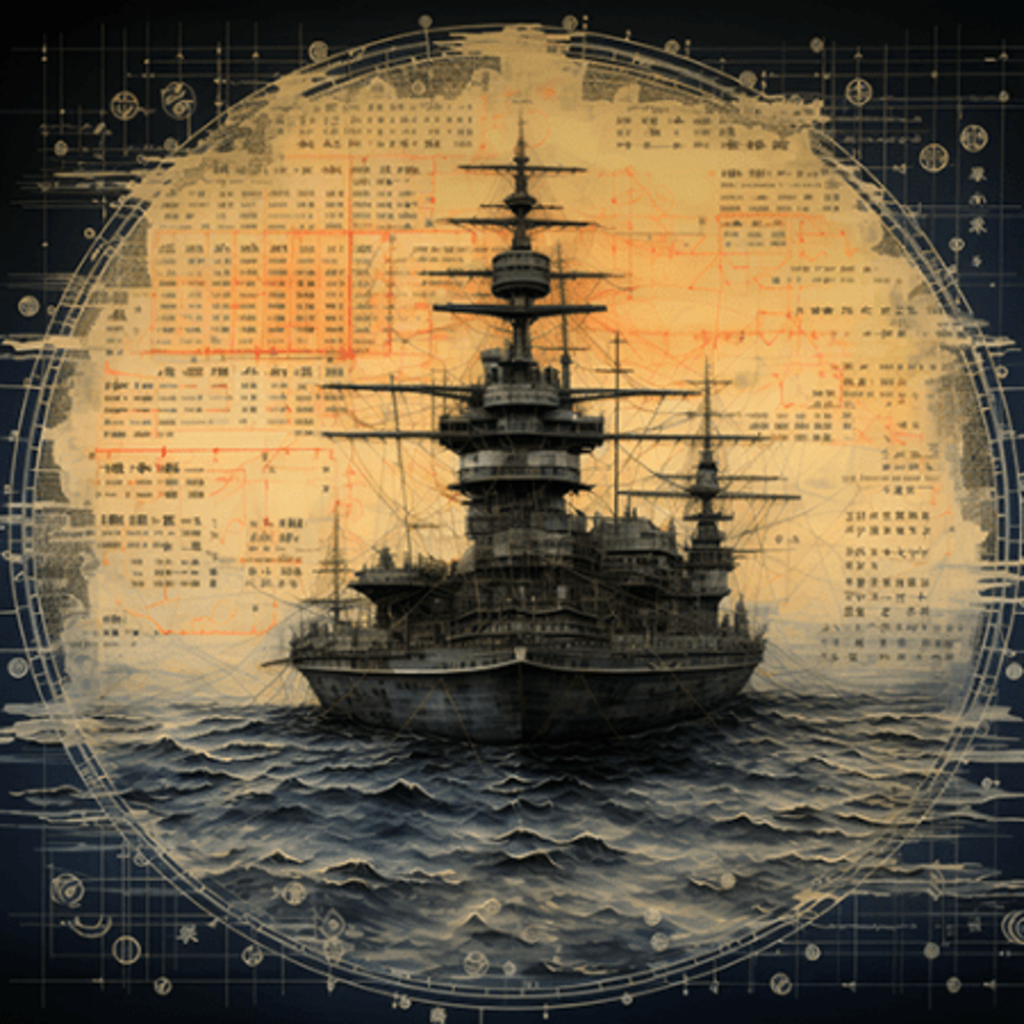
A Personal View of a Few DefCon 31 Villages That My Farther Would Have Liked
The DefCon Villages include a variety of hacker sub-cultures and education opportunities. There was a Village for everyone. The Thirty-Two Villages of DefCon. I saw a few Villages that my Dad, George Losey Sr., would have liked. He was a conservative man, from the Greatest Generation. He Served as a Naval Communications Officer in WWII and again in the Korean War. His favorite Village would probably have been the Soldering Skills Village, now combined with the Hardware Hacking Village. Dad was always soldering something electronic with a small soldering iron in his converted garage workshop. I imagine he had to do the same to keep his equipment going when he was on a small ship at sea in the Pacific, for years. Electronics soldering looked, and was, to some extent, dangerous. So naturally, even as a young kid, I wanted to do it too. He obliged and kept me busy doing stuff in his well-tooled shop. I never burned myself, well, not too much.
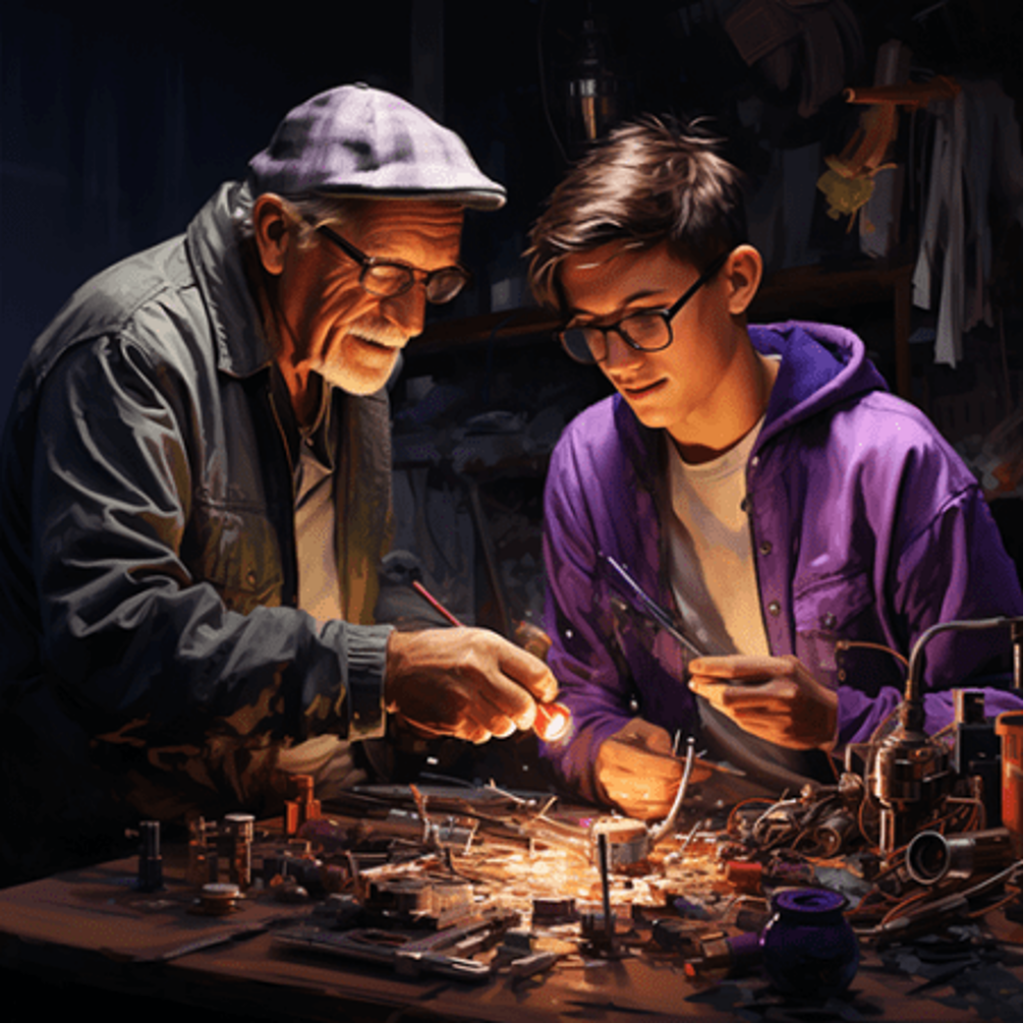
Many ex-military techs and engineers were like that. All very self-reliant. They learned the hard way to overcome all problems themselves, including technical breakdowns, and live with the constant threat of enemy attacks. For the U.S. Navy, which was far outnumbered in the Pacific by the Japanese, sinking by surprise attacks was an everyday threat, so was Japanese propaganda radio telling them they could not win. Through their own intelligence, faith, vigilance, discipline, fellowship and teamwork, most of them somehow got through it. Many hackers today are like that too, for a variety of reasons, including family heritage. Some were not a lucky as my Dad. They died in the Wars. Surprise attacks, a sinking ship and drowning was always a danger in the Navy and, for some, how they came to their end.
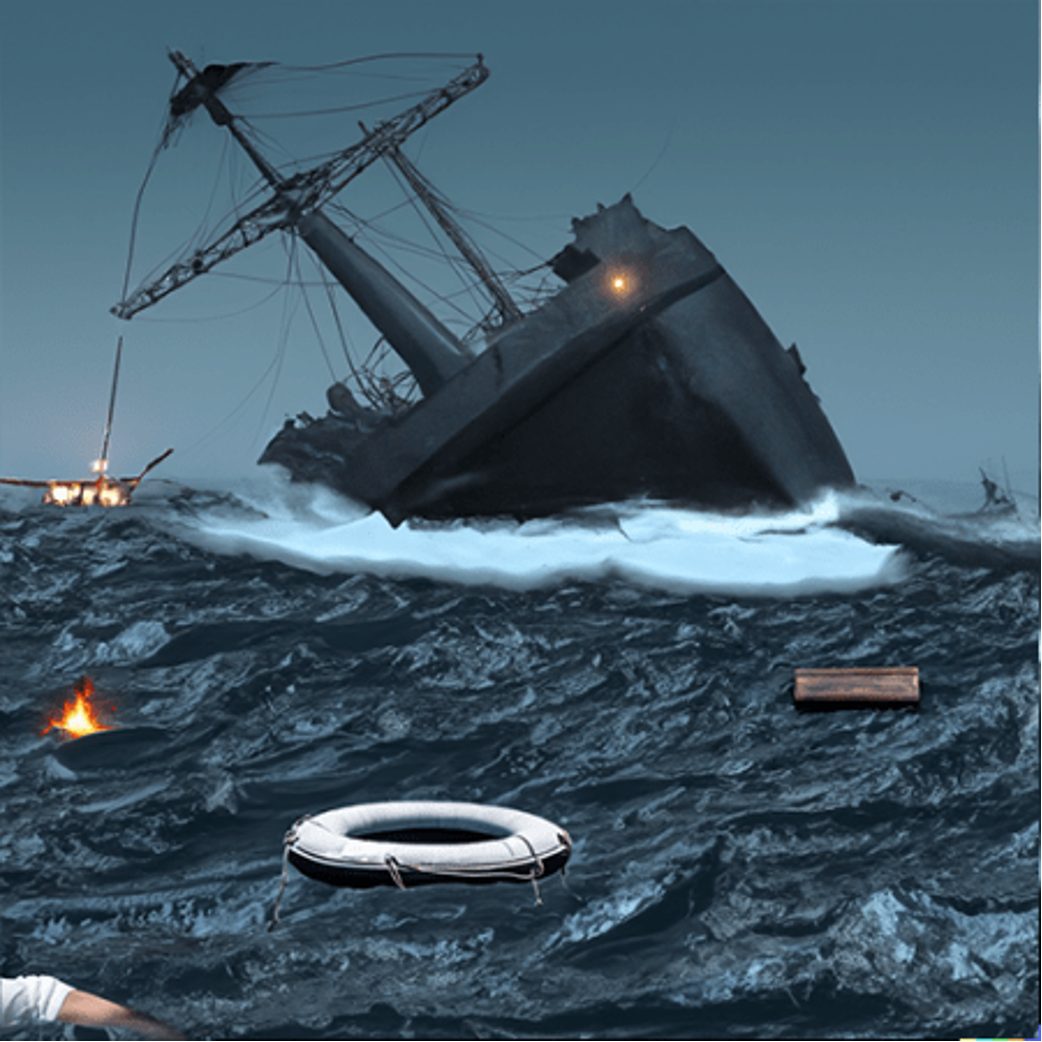
My Dad would have also been very interested in the Crypto & Privacy Village and the Misinformation Village. As a communications officer on small ships in the Pacific and South China Sea, he listened all day to radio transmissions and codes. Cryptography was part of their training and everyday job. When not below doing this, in what they called the radio shack, Dad would be on deck with other officers, carrying huge binoculars looking out for enemy war ships and planes, the Zeros, and especially for Kamikaze pilots. The suicide pilots at the end of the War were feared and considered insane, much like terrorists of today. He ended up keeping a radio and pair of binoculars near him all his life. I just now realized why.
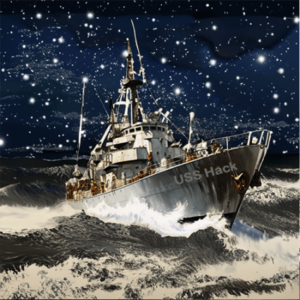
So yes, my Dad was always interested in code and radio communications. These were life and death activities for him in his formative years. He also shared with me, when I was a young adult, that he always suspected our government had broken the Japanese codes, but that information was never revealed to him or his Captain. Navy ships at sea in enemy territory were not overtly warned of possible attacks discovered in decrypted messages. They did not want to disclose to the Japanese that the Navy had cracked their code.
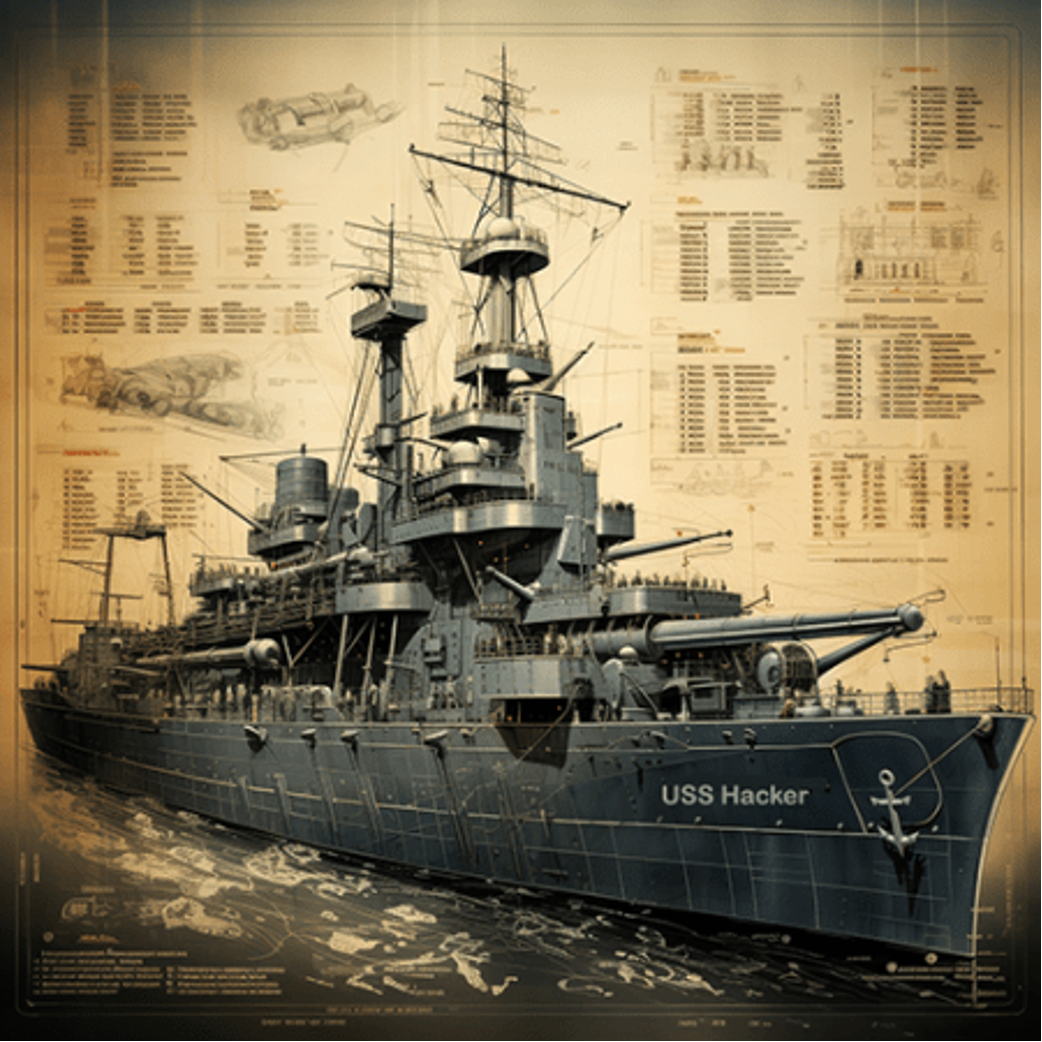
Years later, the suspicions of my Dad and many others in the military were confirmed. Further, the same thing had happened in the European Theatre where the British had cracked the Nazi Enigma Code. A few small sacrifices were thought to be a necessary for the greater good of winning the War. My Dad survived the Wars and never saw a Kamikaze. He told us that he was never in a battle at all. Perhaps that was true, anyway it made my Mother feel better. Before he could leave the Navy, however, he was assigned to be one of the first Naval officers in Japan as part of the second, diplomatic phase of McArthur’s Occupation after the surrender. This history may seem a little off point, but it is important, I think, that we never forget the gruesome truths of history, lest we repeat them. Take a moment to watch this historic video of the surrender and occupation of Japan, which ultimately led to Japan’s democracy and remarkable economy.
VIDEO: Occupying Japan 1945 – The First Uncertain Days of Peace, a Mark Felton Production.
My Dad was no Marine, although one of Navy ships he served on transported them, and so he was not part of the first phase of the Occupation, where armed U.S. military assumed control of Japanese bases after the surrender. He was part of the second phase of the Occupation in early 1946, where select military, often unarmed, would walk around in uniform, what they called showing the flag. They would try to act friendly and offer candy and chewing gum to kids. My Dad, like others in the Occupation, missed his own family and wanted to return home. It must have been both a terrifying and incredibly strange experience for both him and the Japanese. Most of the Japanese people had never seen a Westerner, much less a very tall, young American Naval Officer.
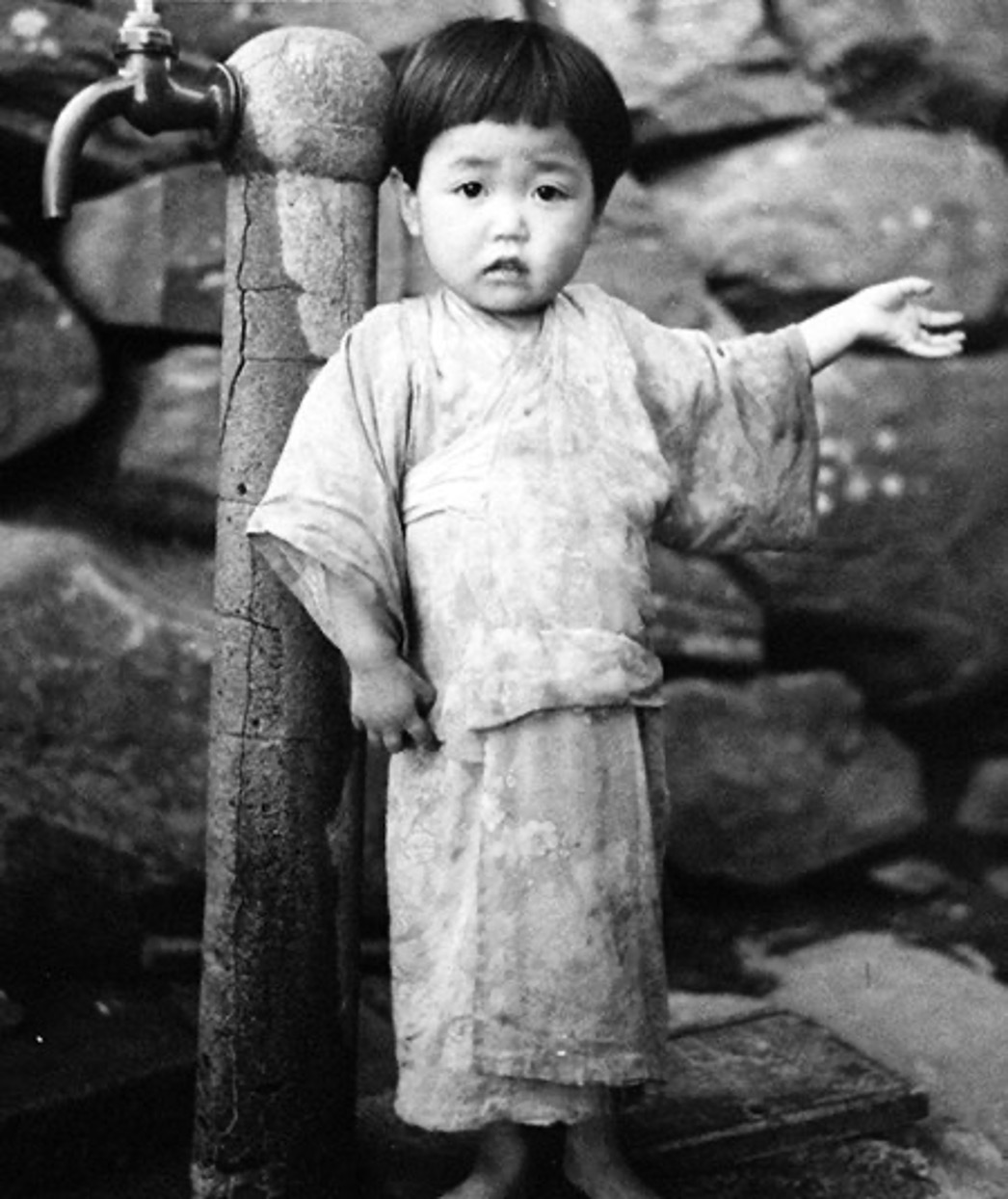
All my father would say about the Occupation is how terrible it was for the Japanese people he saw on the streets. He was one of the first in, and there was still tremendous destruction and rubble all around from bombing. He was fascinated by the art and architecture, especially Kyoto, which was left untouched, but wary of the people. When I was older, he mentioned, just once, the piercing looks of hatred, resentment and proud defiance he received from some of the “repatriated” Japanese military on the streets. He was, of course, walking in uniform in their cities, often alone and unarmed. He understood the hatred he saw, and shared, but was impressed, despite himself, by their silent dignity, a dignity he kept to the very end.
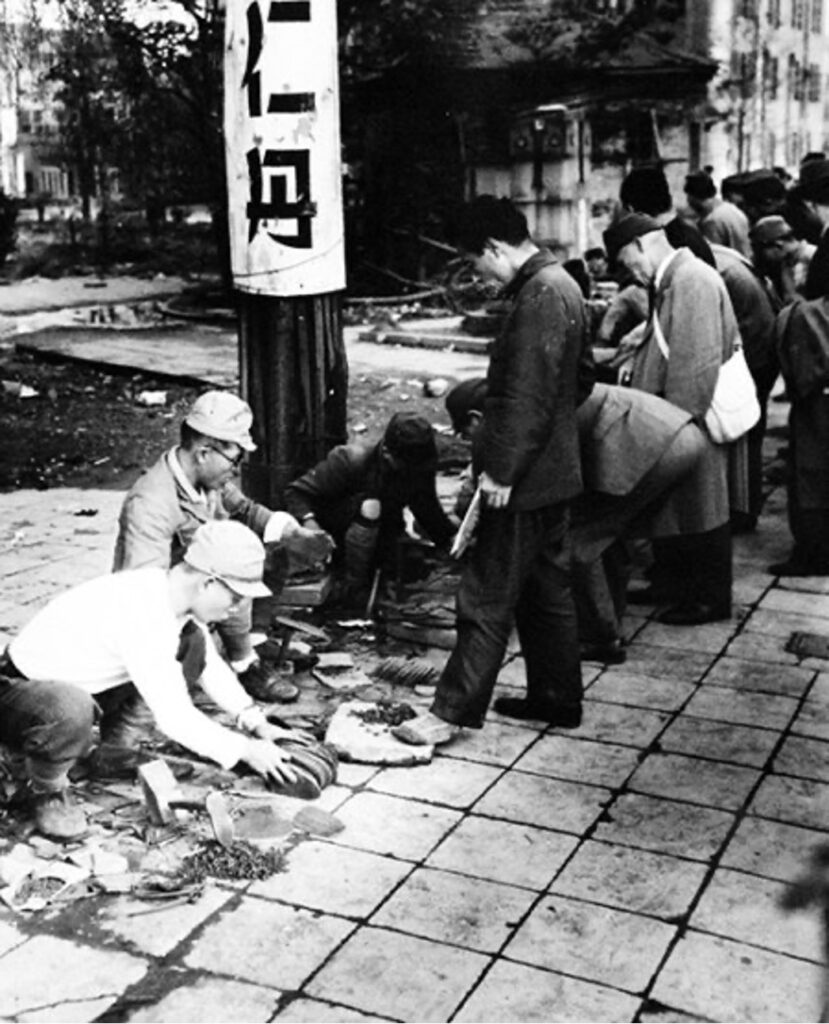
I happened upon the video that follows about a Japanese girl’s first sighting of an American in the Occupation. It could have been my Dad. This video is an incredible and, for me, touching firsthand account. Please take two minutes to watch this video.
Meeting an American for the First Time – Michiko Kornhauser.
George S. Losey Sr. would also have liked the Ham Radio Village, which describes itself as “Continuing this pioneer spirit, Ham Radio Village is here to support advancement of the hobby with a cybersecurity slant.” My father, following his Navy training, built a large ham set-up with a giant antenna at home that always needed tweaking. Ham Radio was another thing he taught me, plus the Morse Code. Although I never bothered to get my own FCC license.

Dad was also one of the first to purchase a TRS-80 computer from Radio Shack, which was one of his, and my, favorite stores. At the time, I had no idea the store name is what sailors referred to his place of work onboard a ship. I remember reading the instruction manuals with him and setting up the TRS-80. DefCon 31 had some instruction and contests in hacking old systems. He would have liked those too, although I did not see Radio Shack models included. I also did not see my favorite old system at DefCon, one that came a few years after Radio Shack’s, the Texas Instrument 99/4A. I taught myself to program on the TI-99/4A, using TI Basic and Assembly, and created my first games and teaching software with it. Teaching yourself to program is something that most hacklers have in common.
As a result, in part, of these War experiences, my father, like many in the Greatest Generation, was detached and very private. The military was trained not to talk about what they were doing. So were military families. Spies could be everywhere. See this collection of WWII U.S. posters on the need for secrecy to save boys lives. Here is one of the most popular on loose lips sinking ships.
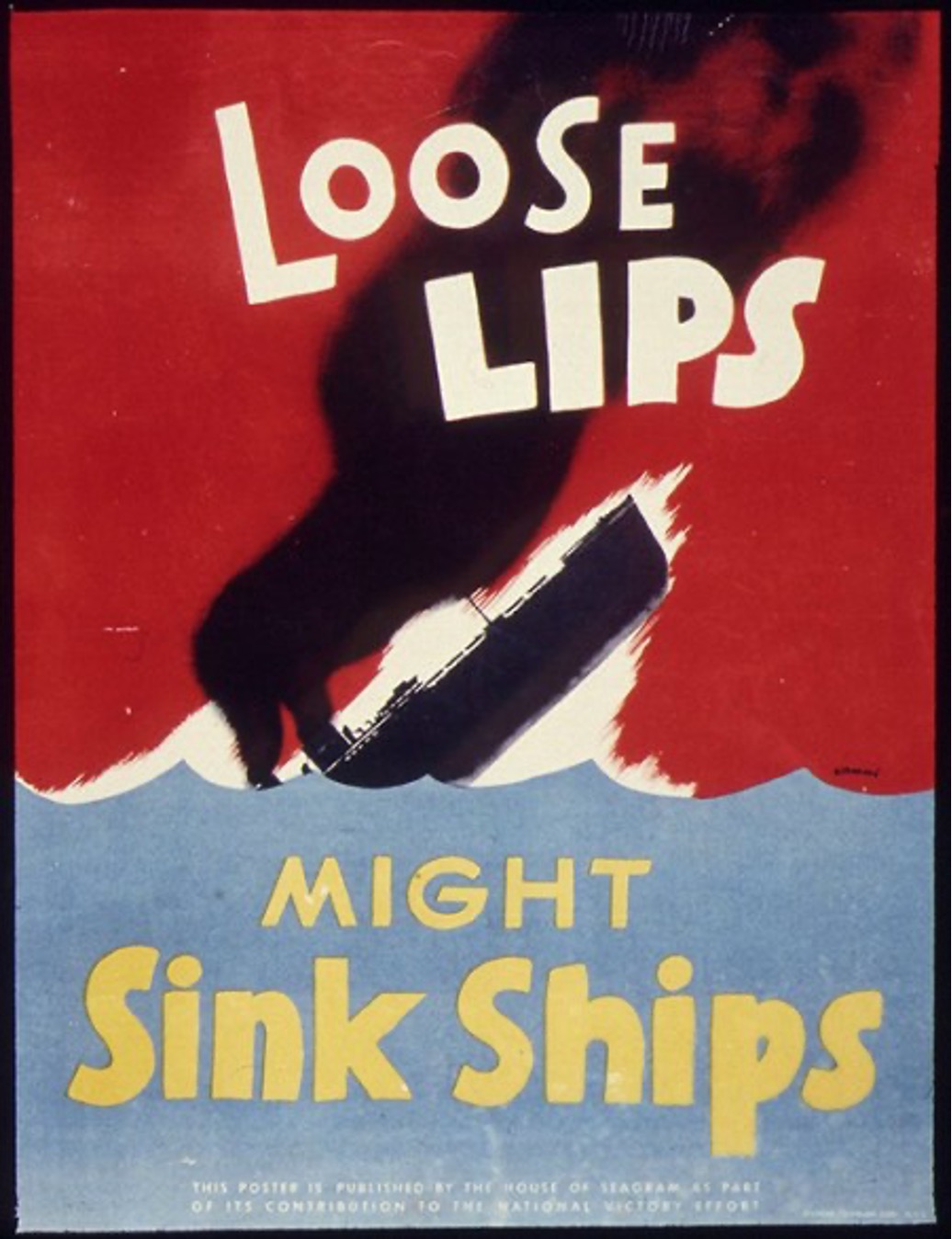
I heard that expression often growing up. Even after the wars, we faced the cold war and constant threats of nuclear annihilation. We still do. The need for privacy and secrecy in deeply ingrained in many of us. That is why lawyer confidentiality obligations, and the need to keep client secrets, comes easily for me. I’ve ingrained that in my kids too.
Like most men his age, my Dad almost never talked about the Wars, WWII and Korea. Still, it was obvious from his comments that he never fully trusted the government or the military “Top Brass,” as he called them. He was a strong believer in personal privacy. So am I. We both resonated with Orwell’s 1984 novel. I could go on about him, but he would object. I have already shared too much about what is nobody’s business but his own. The Greatest Generation was like that. May their heroic sacrifices in the fight against Nazis and Imperialists never be forgotten. Yes, George Sr. would have liked the Crypto & Privacy Village.
Dad was also very fond of listening to Police Radios. For that reason he would have liked the Recon Village, especially the Village presentation, Nosey Cops: Exposing the Hidden Potential of Police Radio by a police radio hobbyist. Here is the link to the Recon Village video of talk. Unfortunately, the volume is too low of the police radio tapes played in the presentation (rookie mistake), so we can’t really hear all of the bad stuff that Atlanta police officers said.
Keeping it real though, Dad would not have liked the far-out looking appearances of many of the hackers at DefCon 31. Still, he was always, first and foremost, a tech-minded expert. He would have put any weird appearances aside, if a person was truly interested, to teach them a thing or two about soldering, model railroad building, remote controls, police radios, old types of code, etc. I am the same way, but in different fields of course. Yes, there was a lot to like in the Villages of DefCon for all generations and types, military and punk alike.
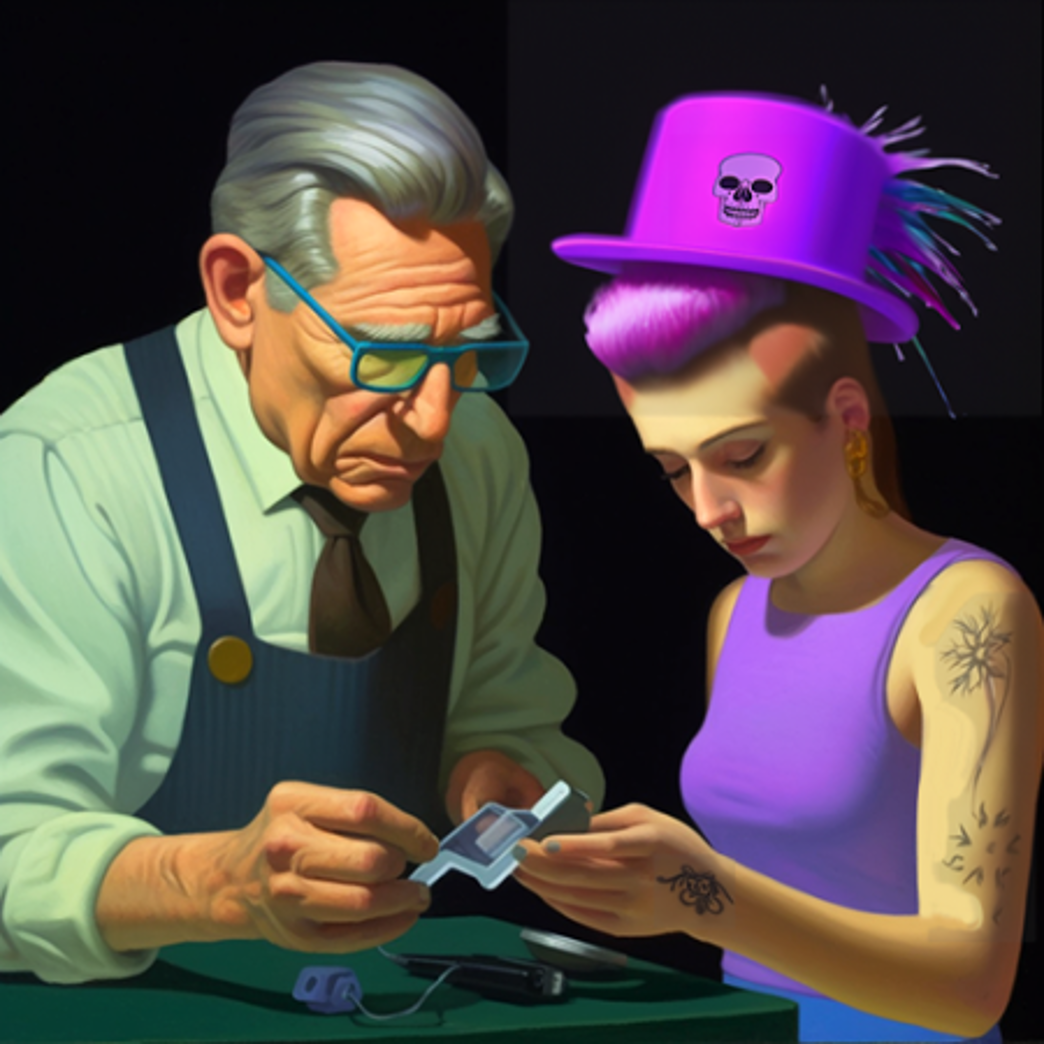
Misinformation Village
There is one more Village that I am sure my father would have liked, the Misinformation Village. It deserves special mention. He was well aware of the harm of propaganda, especially from his years of listening to Japanese propaganda, especially the news and music radio show, Zero Hour. It was beamed across the South Pacific and Australia to GIs and starred Japanese American disc-jockeys. They were played by a number of different Japanese women, all of whom were called “Tokyo Rose” by the GI listeners. The Zero Hour show provided good music along with misinformation of supposed Japanese success and Allied failures. It encouraged soldiers both overtly and covertly to give up the fight against Japan and return home. Tokyo Rose became a famous symbol of seductive propaganda during the War, a symbol hated by many.

The Japanese propaganda experts tried to demoralize GI listeners, who were attracted to the music and voice of a young woman, who was obviously American. Only one of the women who worked for Tokyo Radio and the Japanese Secret Police was later identified after the War, Ikuko Toguri, aka Iva Toguri D’Aquino. She was a American citizen of Japanese origin, a recent UCLA graduate. She was stranded in Japan during the War, without a passport, and then coerced into doing the show. She was the one version of Tokyo Rose that, apparently, most GIs did not hate. That was because she read the propaganda in an light-hearted, friendly manner and went by the handle Orphan Ann. As the History Channel noted:
The surviving recordings and transcripts of Toguri’s programs indicate that she never threatened her listeners with bombings or taunted them about their wives being unfaithful—two favorite strategies of wartime propagandists—but she wasn’t Japan’s only lady announcer. There were dozens of other English-speaking women who read propaganda, and at least some of them adopted a more sinister tone
How ‘Tokyo Rose’ Became WWII’s Most Notorious Propagandist, History Channel.
This last version of Tokyo Rose, Iva Toguri D’Aquino, divulged her identity after the surrender of Japan in the early days of the Occupation. She did so to try to collect a cash award offered by U.S. reporters in Tokyo. They were all searching for the notorious Tokyo Rose. After she disclosed herself and tried to leave Japan, she was arrested by U.S. military police instead. She was investigated, cooperated with the Occupation military, even recreating her show for them to record, and then she was released. But then famed US radio announcer Walter Winchell heard about it, and protested loudly, whereupon she was arrested and investigated again. She quickly became a household name in postwar America. She was vilified by the media who played to post-war resentments and hatred. In 1948 she was indicted for treason. Winchell, who was himself a notorious propaganda expert, convinced most everyone that Toguri’s friendly, understated California girl approach was in fact clever, traitorous propaganda. It sold papers to enflame the passions of Japanese hatred.
The trial of Tokyo Rose began on July 5, 1949. It lasted 12 weeks and cost $750,000, making it the most expensive court case in American history at the time. National Registry of Exonerations. Not surprisingly, a jury in the U.S District Court in San Francisco found her to be guilty, but, and this is surprising, she was only found guilty of one of the eight counts of treason charged. Specifically, she was only convicted for her speaking on air the following, which she denied: “Now you fellows have lost all your ships. You really are orphans of the Pacific. Now how do you think you will ever get home?” Iva Toguri became only the seventh person in U.S. history to be found guilty of treason. She was sentenced to ten years in prison, fined $10,000 and stripped of her citizenship. Treason, then and now, carries a death penalty, so it could have been worse.

According to Wikipedia, Iva Toguri D’Aquino’s arrest and prosecution was an unfair exercise in disinformation. This is a very deep rabbit hole, but it looks like Wikipedia is right. See National Archives Records on Toguri, the FBI records, and the more recent Tokyo Rose: The Woman Wrongfully Convicted of Treason (Court House News Service, 2020). Twenty years after the famous trial, two witnesses admitted perjury. Moreover, judicial misconduct is on the record. Defense testimony and argument was unfairly limited and the judge would not accept the juries hung verdict, because of the costs of the trial. Also see the PBS History Channel Investigations show on Tokyo Rose, including a once classified government memorandum located, showing key witness perjury was known and hidden. Also See, Mark Felton’s excellent video, “Tokyo Rose” – WW2 Traitor or Victim?
A sacrificial lamb was needed by the media and government, and they got it, truth be damned. But eventually, the truth came out. Her defense lawyer, Wayne Collins, never gave up. He was a leader in the legal fight against persecution of Japanese Americans, both during and after World War II. Neither did his lawyer son, Wayne Merrill Collins, who continued his father’s crusade for justice after his father’s death in 1974. See the 2020 Court House News Service Article, supra, and Carrying the Torch: Wayne Collins Jr. on His Father’s Defense of the Renunciants (Discover Nikkei, 2014).
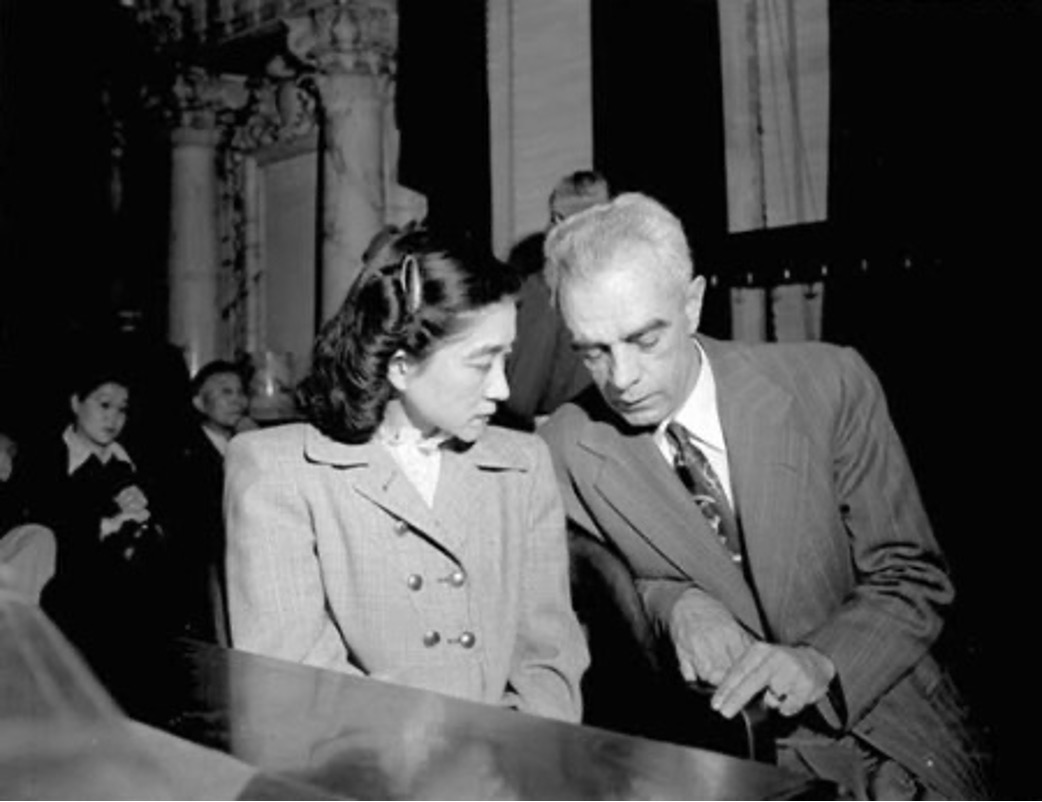
In 1977 justice finally prevailed. Toguri, a/k/a Iva Toguri D’Aquino, was pardoned by President Gerald Ford and her citizenship restored. She lived on until 2006, dying at age 90. Sometimes distrust of the top brass is warranted. It is encouraging to see attorneys’ stubborn perseverance win in the end. Never give up. That is the Hacker Way and the American Way.
________________________
Back to the Misinformation Village, a standing joke at this year’s DefCon was, I wanted to go, but it was incorrectly labeled on the map. The maps were complicated and necessary to find smaller venues like the Misinformation Village. It was a small Village and hard to find. Maybe next year it will have more space and easier accessibility. Here is their self-introduction:
The village’s main event is at DEFCON, and features short talks, workshops, and fireside chats. The village covers misinformation tactics, current campaigns, potential methods for defense and inoculation, and discussions of current and future campaigns.
Misinformation Village, Welcome Page
Here is the upbeat intro video that the Village put out. The opening lecture of the Disinformation Village was Teaching Information Warfare: Strategies in Academic and Government Institutions by Greg Carpenter, Ph.D., Chief Security Officer of KnowledgeBridge International. Greg Carpenter is a retired Army Officer with twenty-five years of service, many awards, and is an expert in electronic warfare. Here is selection form the Misinformation Village’s detailed description of Greg’s Session on information warfare:
This presentation provides a concise overview of the teaching strategies employed in academic and government institutions to educate individuals on information warfare. … The multidisciplinary nature of information warfare actively encompasses cybersecurity, psychological operations, Operations Security, electronic warfare, deception techniques, and associated intelligence support.
Misinformation Village Schedule

Next year I will make a point to attend as many of these Misinformation Village presentations as possible. Misinformation is a key problem of our age; it has been forever perhaps, but especially since WWII and the success of the Nazis. I have written about the problem of misinformation in the Twenty-First Century many times. See eg: Information → Knowledge → Wisdom (series of essays). The problem has been greatly exasperated by unregulated AI bots since 2016, but there is still hope that properly aligned and regulated AI may still save the day. See e.g.: Hackers Response to President Biden’s Unprecedented Request to Come to DefCon to Hack the World for Fun and Profit.
My hope, my vision of the future, is that AI will help us survive the disinformation tsunami, help us to progress from an Information Age to a Knowledge Age, and maybe someday, to a Wisdom based culture. Also see my series of essays concerning Plato’s Cave allegory as applicable to today’s misinformation culture. This is a cause I will never abandon, no matter what the odds.
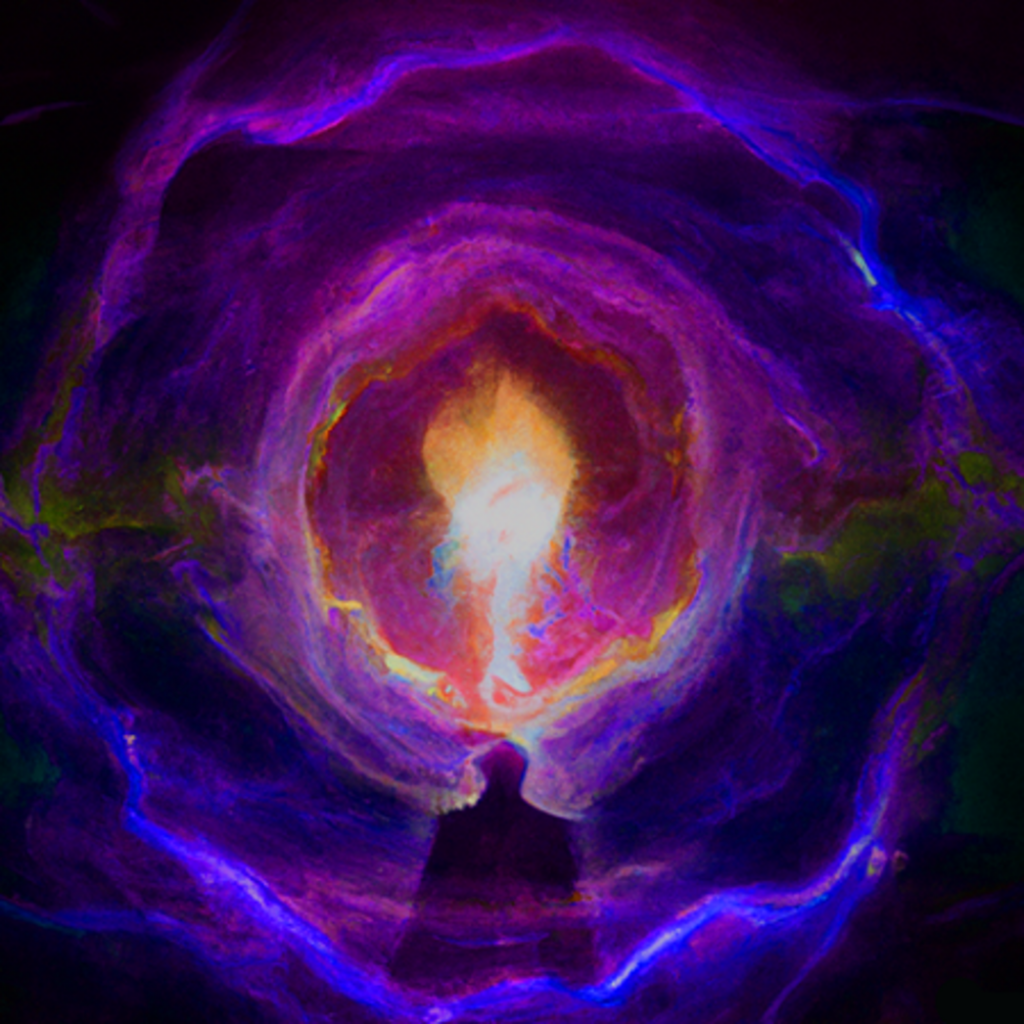
Conclusion
Hackers have their origin in WWII techs and engineers like my father. They were the original hackers. It all flows from them, including the first computers. Things like Soldering Skills, Crypto-Privacy, Radio, Recon, and Misinformation were all part of a communications officer’s training. Most of this training was on the job, self-taught, under great pressure, facing life and death challenges. Those in the Pacific knew they were outnumbered and outgunned after the bombing of Pearl Harbor. Most of the Tokyo Rose personalities they heard reminded them constantly of their precarious, seemingly hopeless life. They were urged to quit.
In this cauldron of danger the WWII Hacker spirit of self-reliance and determination was born. Hacker techs of every generation never give up. They ignore the propaganda and fight on, fiercely, despite the odds.
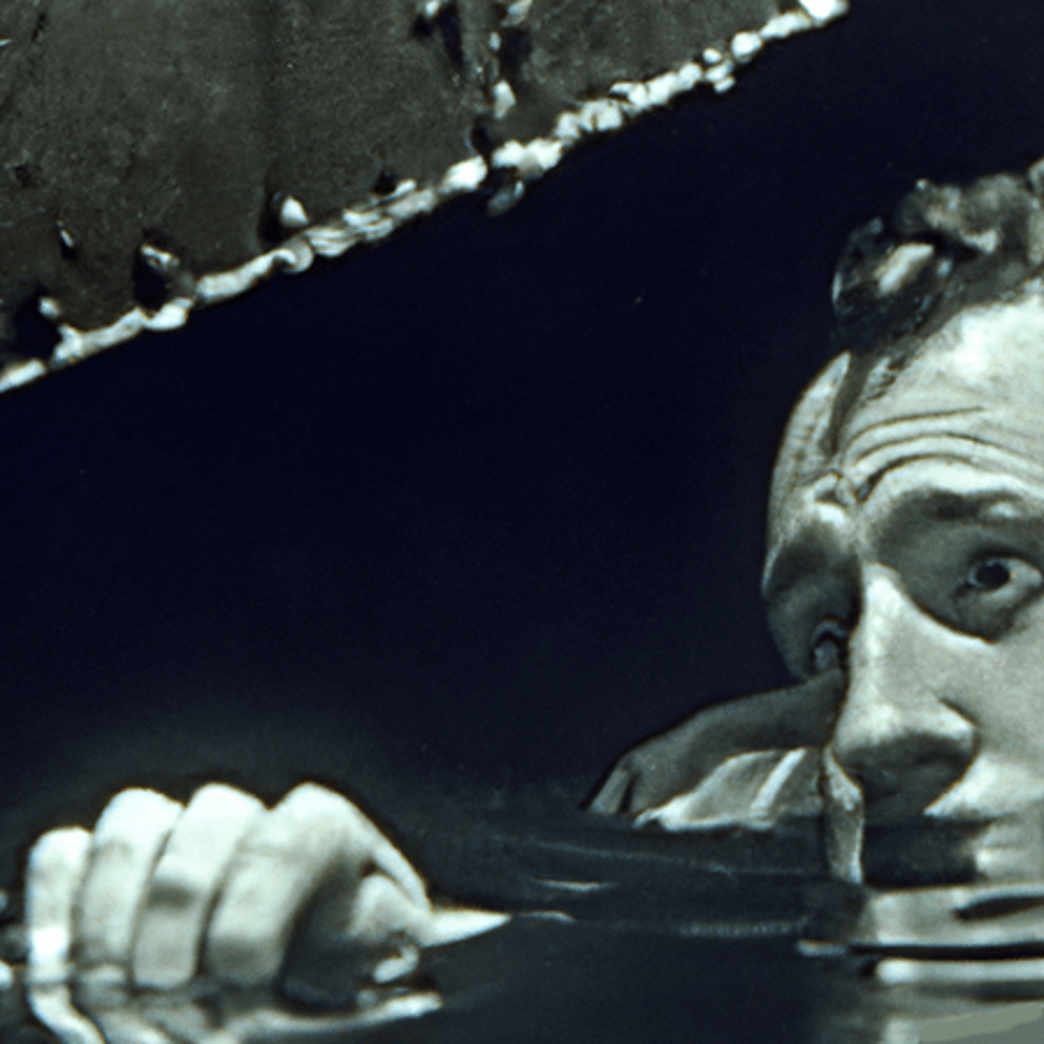
Cybersecurity today may seem like a hopeless struggle, a tech system where enemies infiltrate networks daily with surprise Zero Hour attacks. The aggressors always seem to have the upper hand. It may seem like we are drowning in misinformation and social engineering. But still, the cybersecurity experts of DefCon 31 fight on, not only to make a living, but out of personal ideals. They do so in true WWII hacker spirit.
Hackers do not fall for the enemy’s discouraging propaganda, that the battle for secure systems is futile, that misinformation can never be stopped. Truth and justice are not propaganda. They are ideals worth fighting for, worth dying for. The Greatest Generation knows this, including the father son legal team of Wayne Collins Sr. and Jr. They fought on for justice for Tokyo Rose for 28 years until they won. The hackers of DefCon are the same way, they have the self-confidence and the will to carry on. From out of their dangerous digital cauldron amazing things will continue to emerge.

The Greatest Generation spirit lives on in DefCon. We will win, probably by a tech breakthrough, possibly AI driven, or maybe some other way. The cyber world will someday be safe again from war and disinformation. After we win, I hope we again show mercy on the defeated and hand out red candy pills, not arsenic. Only the red pills of truth lead us all out of the matrix of lies and despair. 10-4?
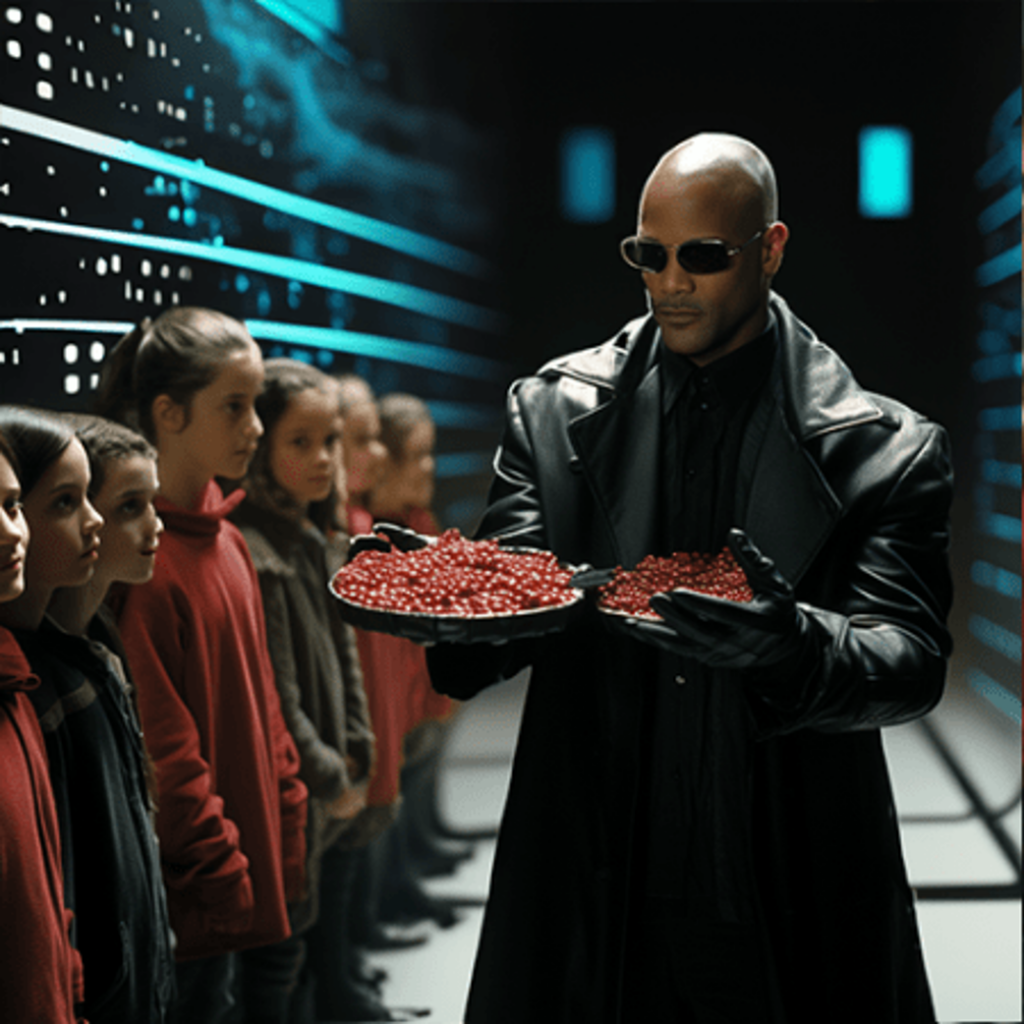
Ralph Losey Copyright 2023 – All Rights Reserved – Does not include government images, YouTube videos. nd DefCon Village descriptions. and images. Published on edrm.net with permission
Assisted by GAI and LLM Technologies per EDRM GAI and LLM Policy for images, not text.


